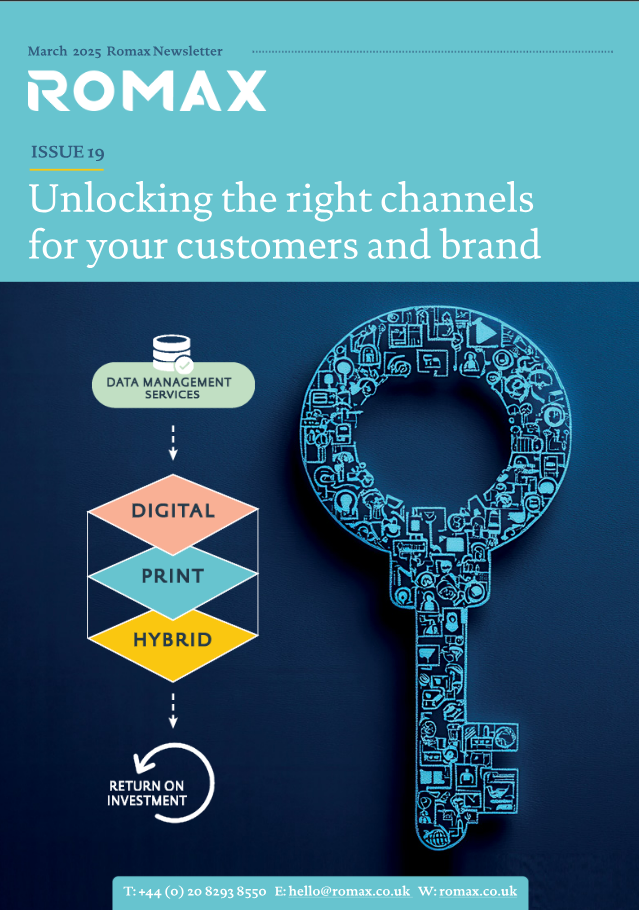But how to get it?
We here at Romax HQ like to dig deep into data – finding new ways to enhance our clients marketing prowess gets us all excited. So it was with interest that we recently were approached by a well known Telecoms company to produce their welcome packs.
Initially, we were sceptical as to how much variability would be contained within the data set given but we were pleasantly surprised the reverse was true. Due to this, we are able to produce relevant, timely, tailored and therefore ultimately useful communications to their client base that enhanced their brand whilst at the same time driving down calls to the call centre with questions already answered.
So this got me thinking. How can we educate our other clients in the value of data within their organisation and how best to collect it?
Why the value exchange matters
Consumers have not been offering their data to business because rather than feeling that they want to, they feel obliged to, therefore the trend is not to share. Ad Blocking on the web grew 90% between 2015 and 2016 alongside preferences being enacted on Chrome and Gmail is an indication that consumers are becoming more protective of their personal data. Recent research has indicated that 4 out of 5 have concerns about the way their data is sourced, captured and sold.
If we are to enhance our industry with valued and relevant communications in a post-GDPR world (even leaving the EU will mean laws in accordance with GDPR) we need consumers to give brands permission to engage so, therefore, we need to give them a reason for doing so.
The exchange
How do brands encourage consumers to part with more and better information willingly?
- Trust
Best practice in data collection is crucial so as to not damage the brand that you are trying to promote in the first place! Ensure email communications have opt ins, permissions are clear and that any unsubscribes are removed from future blasts. Run the Mailing Preference Service (MPS) against any cold data if mailing is part of the campaign mix.
- Treat data as a privilege, not a right
Once permission to engage has been given, brands should listen to what the consumer has said, and give them what they have asked /signed up for. Ensure the campaign execution contains content relevant to the consumer using the media channels requested. Build the trust to then enhance the knowledge you have of that consumer
- One size does not fit all
Be careful in what you offer in return – take into account age, sex and lifestyle
- Avoid appearing mechanical or cynical
Every communication should relevant and timely so as to implicitly demonstrate your understanding of them as a consumer, not exploiting, their permission to engage.
Data gathering strategies
3 simple data gathering strategies that can create a better value exchange for the consumer:
- Make opt-ins and permissions big, bold and obvious: Transparent opt-ins build trust and enhance feelings of control. Don’t hide them in the small print. Make them a feature, not an afterthought.
- Only ask for what you need: Consumers can’t feel in control of a relationship where they’re asked for large amounts of seemingly unrelated and irrelevant information. Relevance helps build trust.
- Make it progressive: Build your data capture strategy in proportion to your developing relationship. So instead of asking for everything up front in a move perceived as a cynical data grab, start with the bare minimum, and build the data pool over time.
Contact Us
« Webinar Presentation – What you need to know Brexit: The Survival Guide »




